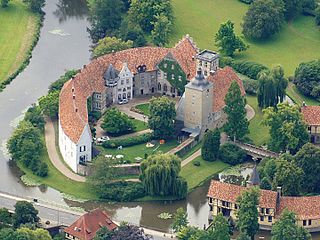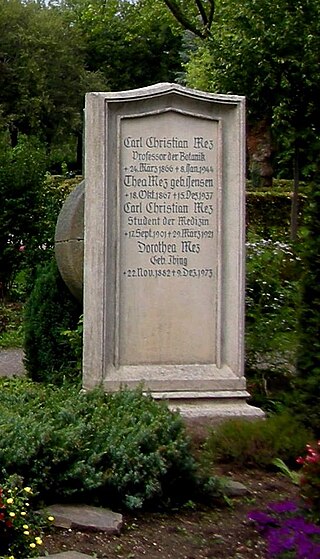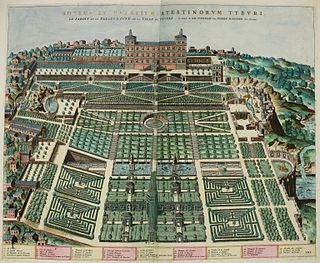This article includes a list of general references, but it lacks sufficient corresponding inline citations .(July 2024) |
The Steinfurter Bagno is a park near the town of Burgsteinfurt in the German state of North Rhine-Westphalia.
Contents



This article includes a list of general references, but it lacks sufficient corresponding inline citations .(July 2024) |
The Steinfurter Bagno is a park near the town of Burgsteinfurt in the German state of North Rhine-Westphalia.



Count Charles Paul Ernest of Bentheim-Steinfurt founded it in 1765 with the intention of creating a summer residence for his family. The initial design adhered to the French garden tradition of imposing strict order and symmetry on the layout. Following Count Louis' succession in 1780, the park saw the addition of various buildings and structures, including the so-called Greece and Egypt, as well as imitations of Oriental and Far-Eastern styles. The oldest surviving layout dates from 1787 and includes 105 buildings, fountains, bridges, statues, islands, gardens, and paths crammed onto a 125-hectare plot.
In later years, criticism on the excessive density of objects and architectural styles and the rise of the English garden brought about substantial change to the Bagno. Buildings and other objects were removed, new ones constructed; straight ways were replaced by meandering paths, natural looking yet artificial cascades were built, large lawns created and exotic trees planted. The Bagno developed into the most prominent park of Westphalia boasting extraordinary fountains, a widely known chapel, and a lake navigated by a fleet of small yet pompous ships. In a rather modern move, the Count opened the park to the general public.
The park experienced a sudden change in 1806 when Napoleon's vassals seized the county. Count Louis traveled to Paris to talk to the French emperor in person and reclaim his position, but to no avail. His son Alexius maintained the park on scant means, and saw himself forced to demolish a number of buildings for want of money for their maintenance. By 1828, only 16 of the 39 buildings counted in 1806 remained; of these 3 remain to this day.
State contributions of 4.1 million Euros helped reshape the Bagno in 2004; the refurbished concert hall has gained particular popularity since. In 2006, the park became a member of the European Garden Heritage Network. [1]

Steinfurt is a city in North Rhine-Westphalia, Germany. It is the capital of the district of Steinfurt. From c. 1100–1806, it was the capital of the County of Steinfurt.

Bad Bentheim is a town in the southwestern part of Lower Saxony, Germany, in the district of Grafschaft Bentheim on the borders of North Rhine-Westphalia and the Netherlands roughly 15 km south of Nordhorn and 20 km northeast of Enschede. It is a state-recognized thermal brine and sulphur spa town, hence the designation Bad (“Bath”). Also to be found in Bad Bentheim is the castle Burg Bentheim, the town's emblem.

Saint Blaise Abbey was a Benedictine monastery in the village of St. Blasien in the Black Forest in Baden-Württemberg, Germany.

Carl Christian Mez was a German botanist and university professor. He is denoted by the author abbreviation Mez when citing a botanical name.

Bergpark Wilhelmshöhe is a landscape park in Kassel, Germany. The area of the park is 2.4 square kilometres, making it the largest European hillside park, and second largest park on a hill slope in the world. Construction of the Bergpark, or "mountain park", began in 1689 at the behest of the Landgraves of Hesse-Kassel and took about 150 years. The park is open to the public today. Since 2013, it has been a UNESCO World Heritage Site because of its monumental Baroque architecture and its unique fountains and water features.
The European Garden Heritage Network is a nonprofit organization established in 2003 within the EU-Programme INTERREG IIIB NWE to foster transnational co-operation in regional development and cultural heritage. It brings together garden experts, government services, foundations, and tourism agencies to preserve, develop, and promote gardens of historic interest within northwestern Europe.

The Botanischer Garten Münster is a botanical garden maintained by the University of Münster.
Heinz Schilling is a German historian.

Frederick Adolphus of Lippe-Detmold was a German nobleman and the Count of Lippe-Detmold from 1697 to 1718.

The Park an der Ilm is a large Landschaftspark in Weimar, Thuringia. It was created in the 18th century, influenced by Johann Wolfgang von Goethe, and has not been changed much, preserving a park of the period. It forms part of the World Heritage Site "Classical Weimar along with other sites across Weimar bearing testimony to the city's historical importance as a cultural hub during the Weimar Classicism movement in the late 18th and 19th centuries".
The following is a timeline of the history of the city of Münster, North Rhine-Westphalia, Germany.
Jürgen Luh is a German historian and exhibition curator. He specialises in the history of Prussia and Germany from the Peace of Westphalia to the early nineteenth century.
Christian Friedrich Baz was a German legal scholar, a representative at the Duchy of Württemberg's state convention or 'Landtag' and from 1796 to 1805 mayor of Ludwigsburg. Born in Stuttgart, he supported the Age of Enlightenment and was open to French Revolutionary ideals, backing the individual freedom and rights of Württemberg's citizens. He was one of the landtag's reformers and soon became a radical and an opponent of Grand Duke Frederick. He was arrested twice and spent almost two years imprisoned in the Hohenasperg, Schloss Solitude in Stuttgart and another fortress in Bohemia. He died in 1808 in Waiblingen.

Friedrich Castelle, was a Völkischer Nationalismus journalist and writer and party member of the NS regime.

Malkasten is a progressive German artists' association, founded in Düsseldorf in 1848, during the March Revolution. Since 1867, their headquarters have been in the Pempelfort district.

Karl Gustav Rutz was a German sculptor.

The County of Steinfurt, originally the Lordship of Steinfurt, was a historic territory of the Holy Roman Empire in the Münsterland. It existed from roughly 1100 until 1806.

A Renaissance garden is a garden or park created in the era and style of the Renaissance. Because the first such gardens originated in Italy, they are sometimes called Italian gardens. However, gardens made later in Germany, France, or England might have had some differences compared to the original Italian gardens.

The Kärlich palace is a former electoral hunting lodge in Kärlich near Koblenz, Germany. It was situated on the northern side of the village. It served as a summer retreat and hunting lodge for the Prince-Electors and Archbishops of Trier.

The Schlosspark Gotha is the park and gardens originally attached to the Schloss Friedenstein in the German city of Gotha. It covers 37 hectares, making it one of the country's largest parks. To the Schloss' south is one of the oldest landscape gardens outside the United Kingdom, first designed in 1765.